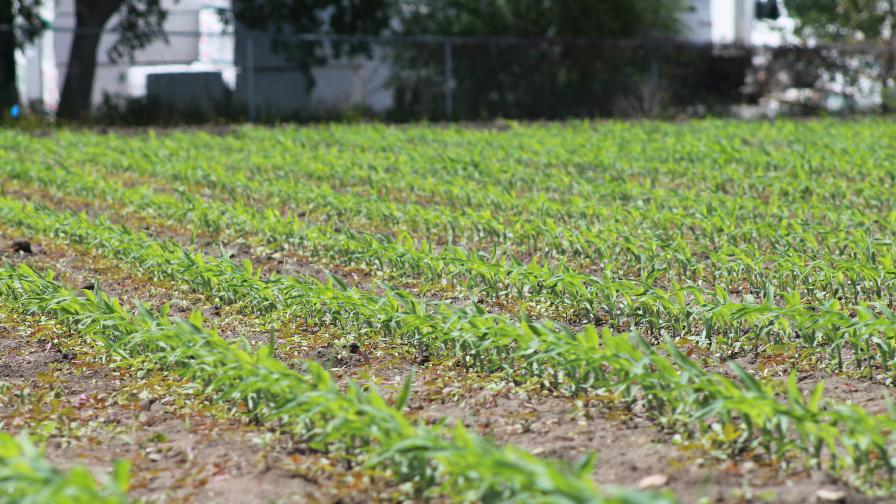The Complex Picture of Grower-Customer Finances in 2020

Despite other financial challenges, analysts say farmland value has remained relatively stable.
It’s one of the fundamental principles of any business — if your customers are making money, so will you. During 2019, this certainly seemed to be the case within the agricultural world overall.
According to statistics from USDA, net farm income during the past year rose approximately 10% from the 2018 growing season, topping $92.5 billion. While this was a far cry from the record income level for grower-customers achieved during the 2013 growing season ($123.7 billion), it still represented a significant improvement from the $62.2 billion in income growers recorded during the 2016 growing season.
Of course, one of the major reasons net farm income improved so significantly during 2019 tied back to a single factor — government payouts. In fact, according to Senior USDA Economist Carrie Litkowski, U.S. growers in 2019 received $6.5 billion in indemnities from federally subsidized crop insurance and $22.4 billion in direct government payments. “When combined, these payments accounted for 31% of 2019’s net farm income,” Litkowski said. “By themselves, direct federal payments would be 24% of farm income — the largest share since 2006.”
Helping net farm income in 2019 to grow so nicely, according to the Federal Reserve Bank in Kansas City, MO, was the fact that production expenses for growers — which peaked for the industry during 2014 — stayed relatively low. “Similarly, farm operating and livestock loans have declined about 9% since 2014,” wrote the Federal Reserve in its report.
Harkening back to this story’s opening sentence, U.S. ag retailers also recorded some strong financial numbers during the 2019 growing season. In fact, according to the 36th annual CropLife 100 survey of the nation’s top ag retailers, these companies saw their overall incomes rise more than 6% for the year, growing from $30.5 billion in 2018 to $32.3 billion.
Signs of Struggle
At first blush, these numbers would seem to indicate that grower-customer finances are in pretty healthy shape going into the 2020 growing season. However, as USDA Chief Economist Robert Johansson points out: “There are financial issues out there and stress. Farm bankruptcy rates, while low, are rising and so are indicators such as the debt-to-asset ratio, which is a measure of solvency.”
For a snapshot of these factors at work, consider the findings of a recent study of Iowa growers conducted by Iowa State University (ISU). According to this report, 44% of the Hawkeye State’s growers struggled to cover their bills during the 2018 growing season. Indeed, Iowa farm debt hit $18.9 billion during the second quarter of 2019, the highest level in the country. The report also found that 31% of growers in the state were what it called “financially vulnerable,” meaning they had difficulty covering short-term liabilities, such as seed, fertilizer, and crop protection products, with easily accessible assets, such as cash, stored grain, and market-ready livestock.
“It’s very, very concerning,” said ISU Agriculture Economist Alejandro Plastina, who conducted the study. “It’s getting harder and harder for farm operations to cash-flow their business.”
ISU Agriculture Economist Chad Hart agreed with this statement. “There’s been a lot of damage done to farmers’ finances over the past several years,” Hart said. “And while things have gotten a little better, they haven’t gotten better enough to prevent some significant financial problems.”
To illustrate this point, observers can point to the national farm debt level. According to USDA data, farm debt in 2019 reached $416 billion. When adjusted for inflation, U.S. farm debt now sits just below the 1980 record of $431.6 billion.
Farm bankruptcies, too, have increased. According to the American Farm Bureau Federation, there were 595 Chapter 12 family farm bankruptcies filed during 2019, up almost 100 filings from 2018 and the highest number recorded since 2011, when 637 Chapter 12 filings occurred.
Lending Worries
Perhaps even more worrying for grower-customers is how their access to loans is shrinking. According to a Reuters study of the lending habits of the top 30 banks in the U.S., agricultural loan portfolios among these fell 17.5% from their peak in December 2015 to $18.3 billion. Examples of this trend in action includes Capital One Financial Corp., where farm-loan holdings fell 33% since 2015, U.S. Bancorp’s were down 25%, BB&T Corp.’s were off 29%, and PNC Financial Service Group’s declined by 12%.
Moving into the 2020 growing season, market analysts predict another difficult year ahead for the agricultural industry. “The U.S. rural economy will continue to face headwinds in 2020 and is expected to underperform relative to the economy of urban America,” said CoBank’s Knowledge Exchange Division in the company’s annual Outlook Report. “Since 2014, Gross Domestic Product growth in rural counties has averaged almost 1% less than in urban counties. That trend is likely to continue without a significant upswing in agricultural commodity prices, energy exploration, rural manufacturing, and other industries upon which rural economic growth depend.”
In particular, said the report, the ongoing trade dispute between the U.S. and China will negatively impact the agricultural economy. “Farm debt, already at record levels, is expected to continue climbing, as credit quality in farm loans declines, particularly for grain and dairy producers,” the report said. “However, stable farm real estate values have helped farmers. The resiliency of farmland values, despite the steep drop in net farm income over the years, has allowed farmers to restructure debt and address tight cash flow and liquidity crunches.”
Even better, said Dan Kowalski, Vice President of CoBank’s Knowledge Exchange Division, the U.S. farm economy has weathered numerous challenges in recent years, including trade wars, extreme weather, and other disruptive events.
“Most current signals indicate the overall domestic economy is on firm footing, thanks almost exclusively to the consumer,” said Kowalski. “However, without a meaningful U.S.-China trade deal, the U.S. agricultural economy will continue to struggle with uncertainty in 2020.”






